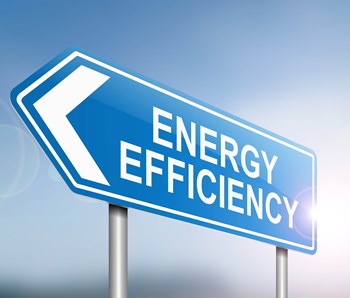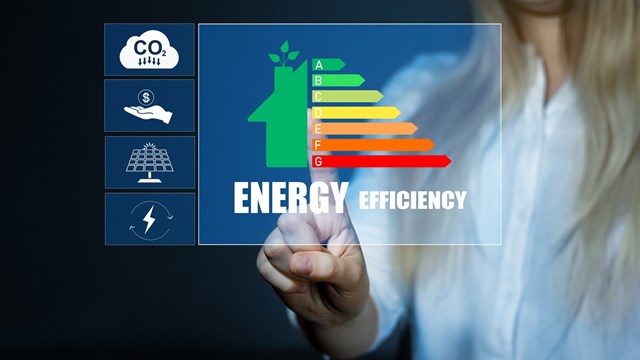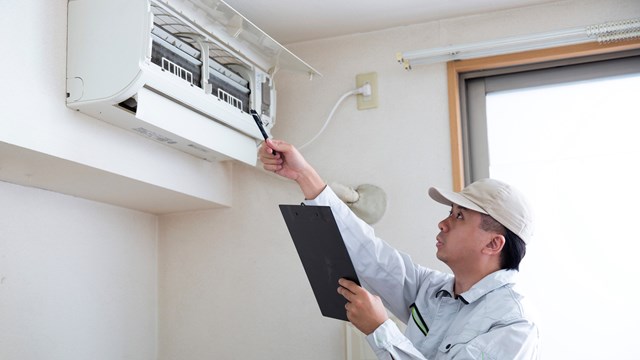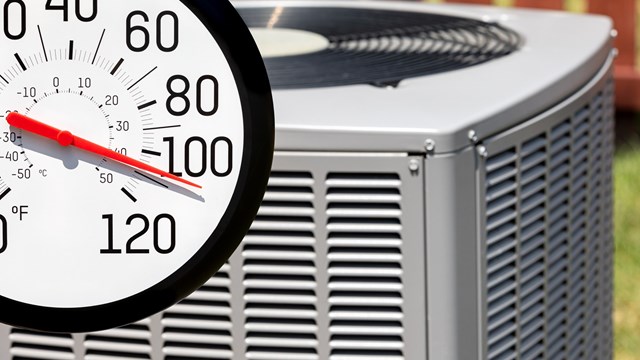
Whether you reside in, manage, or serve on the board of a condo, co-op, or HOA, examining your building’s energy efficiency from top to bottom, inside and out, will have enormous implications for individual and communal costs, energy conservation, and environmental conditions. And in the current unprecedented global viral pandemic, it is more important than ever to consider that making changes to power sources and systems can have collective health effects as well.
So where to begin? In this two-part investigation of energy innovations for multifamily properties, we will help you understand the latest products and systems, how to navigate the slow-moving channels of energy bureaucracy, and even find ways to help pay for energy upgrades. Additionally, we will cover the question permeating every aspect of life these days: How does the coronavirus crisis affect all of this?
This first part explores new energy-efficient products and updates that can be installed in individual units. These innovations have varying costs and levels of complexity, but all of them will pay for themselves in terms of reduced utility bills, lower environmental impact, and comfort and quality of life. Some states even have programs and incentives to defray the uptake expenses.
Part two will delve into broader changes at the building-wide and community level, including how local and federal legislation is impacting the future of clean energy.
Low-Hanging Fruit
Living as we do in the Digital Age, technology seems to develop so quickly that what was just recently cutting-edge is now obsolete. Nevertheless, we continue to look for and find ways to invest in new concepts or products, even if they’re destined to be replaced with something newer and better. Think about how we line up for the latest smartphone the minute it is available, even if the one we have is perfectly functional. When it comes to upgrades in the home, however, many of us are reluctant, even though the stakes can be much higher—we’ll patch and repair a furnace or roof as long as we possibly can before even considering a replacement, running the risk of paying more in the long run.
Luckily, when it comes to energy, there is a wide range of products and technologies that can be implemented to achieve savings in cost, consumption, and climate impact. Many of the pros we spoke to for this article refer to such implementations as the ‘low-hanging fruit’ of energy upgrades—the easily achievable and relatively inexpensive conversions that any consumer can achieve in the home.
Don’t Suck—Unplug
No matter where you live, the easiest and quickest adjustment, says Terrence Cullen, Communications Director for New York City Councilman Costa Constantinides, who chairs the city’s Environmental Protection Committee, is to “Be conscious of the so-called ‘energy vampires’ that pull in electricity if they’re plugged in but not switched on.” Cullen explains that as households add more and more electronic devices and appliances to their power load, they might not be aware that those like televisions, computers, and their related equipment—cable boxes, routers, printers, and so forth—continue to consume electricity if connected to an outlet, even when turned off. Other common energy suckers include entertainment devices like DVRs, DVDs, and video game consoles; electric grooming products like hairdryers, curling irons, and electric shavers; small kitchen appliances like coffee makers, toasters, and blenders; and comfort or ambiance devices like sound machines, portable fans, and Bluetooth speakers.
The U.S. Department of Energy (DOE) estimates that 5% to 10% of a typical American household’s annual energy bill is from electrical appliances consuming energy on stand-by. Unplugging these devices when not in use can save a household $130 to $230 a year on utility expenses, and can reduce their building’s or association’s total energy emissions as well.
Let There Be LED
Another relatively easy energy adjustment with a big impact is swapping out incandescent and compact fluorescent light (CFL) bulbs with light-emitting diodes, or LEDs. Robert Plichta, forensic architect with Energy Systems Inc. (ESi) based outside of Chicago indicates that both the cost and versatility of LED lighting have improved over the years. They now offer a variety of lighting “moods,” including “warm,” “cold,” and “daylight,” he says, as well as different applications like strip lighting and even color-changing options. Because LEDs are about 75% more energy-efficient than incandescent bulbs and emit one-tenth of the heat of CFLs, replacement can reduce costs while limiting greenhouse gas (GHG) emissions, all while providing a more comfortable and flexible lighting solution.
“Cost savings [with a switch to LEDs] can be substantial, both in the electric bills and in the replacement costs,” says Tim Schaake, Sales Engineer for USA LED Lighting Solutions based in Southbury, Connecticut, and offering services in the tri-state area as well as Massachusetts and Rhode Island. “LEDs use only a fraction of the energy of an incandescent or even a CFL, and will last 25% longer, without the wasted heat of either an incandescent or a CFL.”
Some cities and states already have a sense of the impacts and quality that LED lighting provides, since the passing and upholding of laws mandating energy-efficient lighting in both government and private sector buildings. New Jersey and Utah passed legislation to phase out old-fashioned incandescent light bulbs in 2007, and other states, including California, Connecticut, Colorado, and a few others have followed suit. Cities have taken up the conversion call as well; New York City’s Local Law 88 requires all buildings larger than 25,000 square feet to transition to LED lighting by 2025. While the law exempts individual dwellings, residents will still feel the effects that upgraded common area lighting have, both on their environment and on their wallet. “When you talk about common spaces that must be lit continuously, and that take time and manpower to constantly change bulbs, that somewhat minor change can amount to major savings for a co-op or condo,” Schaake continues. Buildings might also investigate government-sponsored incentive programs based on the amount of energy reduction they’re able to achieve, as well as upgrade incentives for multifamily buildings offered by utility providers.
Take Control
Being that this is a relatively simple and low-cost retrofit, a lot of multifamily buildings and communities have already implemented this change. To take it one step further, say the experts, boards should consider upgrading the lighting controls as well. “Automated systems have the advantage of shutting off lights or HVAC in areas that don’t get a lot of traffic or that are less used at certain times of day,” says Plichta. He gives the example of Chicago’s O’Hare International Airport, which recently automated the lighting controls in its parking garage. “It’s great,” he says. “The lights stay off when no one is in the area. Motion sensors detect when a person or a vehicle comes into range, like in [some] hotel rooms when the lights are off until someone opens the door,” adding that automated systems have the added benefit of being touchless, making them helpful in the context of the pandemic by reducing the spread of coronavirus.
Another energy fix that is sure to please any owner or shareholder in a building heated by steam radiators (as much of Boston’s, New York’s, and Chicago’s housing stock is) is a new product called The Cozy. Designed in New York City and manufactured in the U.S., The Cozy is an energy solution that, if implemented building-wide, can reduce heating costs up to 45%, based on a 2018 New York State Energy Research and Development Authority (NYSERDA) study. Using new technology called the thermostatic radiator enclosure (TRE)—an insulating cover that is installed over existing radiators and includes a temperature-sensing system as well as a small fan—a desired temperature can be set either in a centralized system controlled by management or by individual users via mobile app, computer, or on-board controls. If a room falls below the set temperature, the fan turns on to circulate warm air until the desired temperature is reached. While the fan is off, the insulating cover traps heat, allowing the room to stay comfortable.
Adam Farber of MG Engineering in New York indicates that, like any functioning system, for these automated systems to work, compliance is key. If you’re going to spend the time and money upgrading to automatic controls in your building, he says, they have to be used properly. “If the lights are set to stay off in the basement, but the maintenance worker on the night shift overrides the controls because he doesn’t want to enter a dark room in the middle of the night, then it’s not being used to its potential,” he says in a recent webinar on the subject. Both Farber and Plichta therefore maintain that optimizing controls building-wide requires significant buy-in from both staff and residents.
Let ‘Em In
The retrofits with the biggest impact on energy efficiency and emissions reductions involve building-wide upgrades that may require access to individual units. (More on this topic in the next installment.) Perhaps the simplest thing that every unit owner or shareholder in a multifamily building or community can do to achieve energy efficiency is to be reasonable about granting access to the unit when management or its hired professionals are conducting assessments or implementing upgrades. While it may take a concerted communication and education effort on the part of the board and management, resident participation and compliance are key to the success of any energy initiative.
Darcey Gerstein is Associate Editor and Staff Writer for New England Condominium.









Leave a Comment